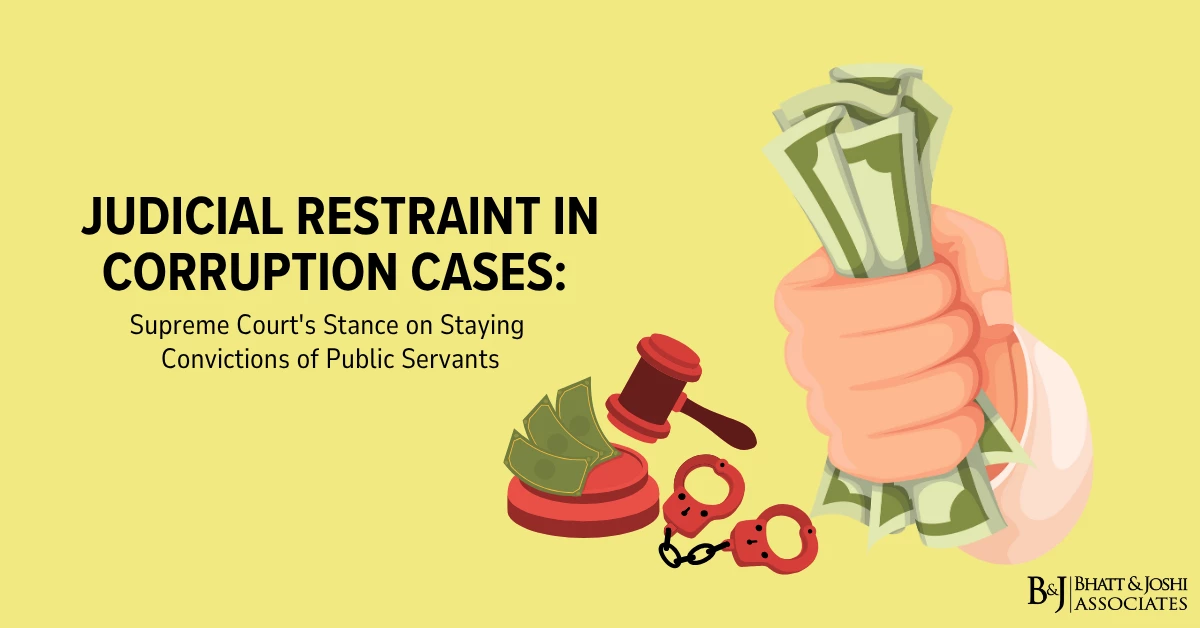Introduction
The Securities and Exchange Board of India (SEBI) enacted the Collective Investment Schemes (CIS) Regulations in 1999 to address growing concerns regarding unregulated investment schemes that were raising substantial funds from the public. These regulations emerged in response to numerous instances where entities collected money from investors under various guises, often related to agricultural, real estate, or plantation ventures, while operating outside the regulatory purview of established financial frameworks. The SEBI (Collective Investment Schemes) Regulations 1999 represent SEBI’s effort to bring these investment vehicles under structured oversight, thereby protecting investor interests while ensuring transparency and accountability in their operations.
History & Evolution of Collective Investment Schemes Regulations
The SEBI (Collective Investment Schemes) Regulations, 1999, were promulgated under Section 30 read with Sections 11 and 12 of the SEBI Act, 1992. They were formulated following the amendment to the SEBI Act in 1999, which explicitly brought collective investment schemes under SEBI’s jurisdiction through the insertion of Section 11AA, which defines collective investment schemes.
The regulations were a direct response to several high-profile cases of financial fraud in the 1990s, particularly involving plantation and agro-based schemes that collected billions of rupees from investors across India. Notable among these were the Anubhav Plantations case and various teak plantation schemes that promised extraordinary returns but ultimately collapsed, causing significant financial distress to thousands of small investors.
Definition and Scope of Collective Investment Schemes under SEBI Act
Section 11AA: Foundational Definition
The definition of collective investment schemes under Section 11AA of the SEBI Act is critical to understanding the regulatory scope. The section states:
“Any scheme or arrangement which satisfies the conditions referred to in sub-section (2) or sub-section (2A) shall be a collective investment scheme.”
Sub-section (2) specifies four essential conditions that define a collective investment scheme:
“(i) the contributions, or payments made by the investors, by whatever name called, are pooled and utilized for the purposes of the scheme or arrangement;
(ii) the contributions or payments are made to such scheme or arrangement by the investors with a view to receive profits, income, produce or property, whether movable or immovable, from such scheme or arrangement;
(iii) the property, contribution or investment forming part of scheme or arrangement, whether identifiable or not, is managed on behalf of the investors; and
(iv) the investors do not have day-to-day control over the management and operation of the scheme or arrangement.”
This broad definition is designed to capture diverse investment structures that might otherwise escape regulatory oversight by avoiding traditional classifications like mutual funds or deposits.
Exemptions Under Collective Investment Scheme Regulations
The regulations include important exemptions under Section 11AA(3), excluding:
- Cooperative societies
- Chit funds
- Insurance contracts
- Deposits under the Companies Act
- Schemes of mutual funds registered with SEBI
- Schemes by recognized stock exchanges
These exemptions recognize that other regulatory frameworks adequately govern these entities.
Registration Requirements for SEBI Collective Investment Schemes
Chapter II: Registration Framework
Chapter II establishes the registration requirements for CIS operators. Regulation 3 states:
“No person shall carry on any activity as a collective investment management company unless he has obtained a certificate of registration from the Board under these regulations.”
The application process requires detailed disclosures, including:
- Corporate structure and management profile
- Financial statements and net worth certification
- Proposed investment objectives and policies
- Draft offer document and trust deed
- Details of trustees and custodial arrangements
Eligibility Criteria for Collective Investment Scheme Operators
Regulation 9 outlines the eligibility requirements for registration:
“The Board may grant a certificate to the applicant if it is satisfied that: (a) the applicant is set up and registered as a company under the Companies Act, 1956 (1 of 1956); (b) the applicant has, in its memorandum of association, specified the managing of collective investment scheme as one of its main objects; (c) the applicant has a net worth of not less than rupees five crores; (d) the applicant is a fit and proper person; (e) the directors or key personnel of the applicant have professional qualification in finance, law, accountancy or business management from an institution recognized by the Government or a foreign university; (f) at least one of the directors has at least five years experience in the relevant field; (g) the key personnel of the applicant have not been found guilty of moral turpitude or convicted of any economic offence or violation of any securities laws; (h) the applicant fulfills all the conditions mentioned in the regulations;”
These stringent requirements aim to ensure that only professionally competent and financially sound entities can operate collective investment schemes.
Trustees and Their Obligations Under CIS Regulations
Chapter III: Trustee Framework
Chapter III establishes the crucial role of trustees in safeguarding investor interests. Regulation 16 states:
“Every collective investment scheme shall appoint a trustee who shall hold the property of the scheme in trust for the benefit of the unit holders.”
The regulations impose specific eligibility criteria for trustees:
- Only entities registered with SEBI can act as trustees
- Trustees must be independent of the CIS operator
- They must have professional expertise and financial soundness
- They must have no conflicts of interest that could compromise their fiduciary role
Trustee Obligations Under Regulation 24
Regulation 24 outlines comprehensive obligations for trustees:
“The trustees shall: (a) ensure that the activities of the collective investment scheme are conducted in accordance with the provisions of these regulations; (b) ensure that the funds raised are invested only in accordance with the provisions of the trust deed and these regulations; (c) take reasonable and adequate steps to realize the objectives of the schemes and to ensure that the collective investment management company fulfills its obligations specified in these regulations; (d) ensure that all transactions entered into by the collective investment management company are in accordance with these regulations and the provisions of the trust deed; (e) take steps to ensure that the transactions entered into by the collective investment management company are in the interest of investors; (f) ensure that the collective investment management company sends to the trustees quarterly reports of its activities and the compliance with these regulations; (g) call for the details of transactions in securities by key personnel of the collective investment management company in his own name or on behalf of the collective investment management company and report to the Board, as and when required; (h) review the net worth of the collective investment management company on a quarterly basis; (i) furnish to the Board on a half-yearly basis: (i) a report on the activities of the scheme; (ii) a certificate stating that the trustees have satisfied themselves that the affairs of the collective investment management company and of the various schemes are conducted in accordance with these regulations and investment objectives of each scheme; (j) be bound to take steps to ensure that the interests of the investors are protected.”
This comprehensive list of obligations establishes trustees as the primary guardians of investor interests within the CIS framework.
Offer Document and Investor Disclosure
Regulation 20: Comprehensive Disclosure
Regulation 20 mandates detailed disclosures in the offer document:
“The offer document shall contain such information as may be specified by the Board: Provided that the collective investment management company shall issue an advertisement in one national daily with wide circulation, giving details as to the opening and closing of the subscription list and other information, within fifteen days before the closure of the subscription list.”
The specified information includes:
- Risk factors and investment considerations
- Financial projections and assumptions
- Management expertise and background
- Trustee qualifications and independence
- Investment policy and restrictions
- Fee structure and expenses
- Rights and obligations of unit holders
- Redemption and exit options
- Conflicts of interest disclosures
- Valuation methodology and accounting policies
This comprehensive disclosure regime aims to ensure investors can make informed decisions about their participation in collective investment schemes.
General Obligations of Collective Investment Management Companies
Chapter V: Operational Standards
Chapter V establishes broad operational requirements for CIS operators. Regulation 25 states:
“Every collective investment management company shall: (a) be responsible for managing the funds or properties of the collective investment scheme on behalf of the unit holders; (b) take all reasonable steps and exercise due diligence to ensure that the collective investment scheme is managed in accordance with the provisions of these regulations, offer document and the trust deed; (c) exercise due diligence and care in managing assets and funds of the scheme; (d) be responsible for the acts of commissions or omissions by its employees or the persons whose services it has procured; (e) submit to the trustees quarterly reports of its activities and the compliance with these regulations; (f) appoint registrar and share transfer agents;”
Additionally, the regulations impose strict prohibitions on certain activities:
“No collective investment management company shall: (a) undertake any activity other than that of managing the scheme; (b) act as a trustee of any scheme; (c) launch any scheme for the purpose of investing in securities; (d) invest in any securities of its associate or group companies.”
These provisions aim to ensure focused operations and prevent conflicts of interest.
Investment Restrictions
Regulation 44: Investment Safeguards
Regulation 44 imposes specific investment restrictions:
“The collective investment management company shall not: (a) invest the funds of the scheme for purposes other than the objectives of the scheme as disclosed in the offer document; (b) invest corpus of a scheme in other collective investment schemes; (c) charge any fees on the trust other than as permitted by these regulations; (d) lend or advance any money from the funds of the scheme otherwise than as part of the objective of the scheme; (e) make any investment with the objective of receiving short term returns; (f) borrow funds of the schemes unless permitted by the trust deed.”
These restrictions are designed to prevent speculative activities and ensure that investments align with disclosed objectives.
Key Judicial Rulings Shaping CIS Regulation
PACL v. SEBI (2015)
This landmark Supreme Court case established critical principles regarding the definition and regulation of collective investment schemes. PACL had collected approximately ₹49,000 crores from investors for agricultural land purchase and development but argued that their arrangement did not constitute a CIS. The Supreme Court held:
“The legislative intent behind Section 11AA is to bring within the regulatory framework of SEBI all schemes where investors’ funds are pooled and utilized with a view to receive profits from an investment activity, with day-to-day control resting with the scheme operator rather than the investors. The application of Section 11AA is determined by the substance of the arrangement, not its form or nomenclature. When an entity collects funds from the public with promises of returns from property development or agricultural activities, while retaining management control over the investment, such arrangement falls squarely within the definition of a collective investment scheme regardless of how it is structured or described.”
This judgment significantly strengthened SEBI’s regulatory reach over schemes that attempted to circumvent CIS regulations through alternative structures.
Sahara Real Estate v. SEBI (2013)
This Supreme Court case addressed jurisdictional questions between SEBI and other regulatory authorities. Sahara had raised funds through optionally fully convertible debentures (OFCDs) but argued that SEBI lacked jurisdiction as the instruments were privately placed. The Court held:
“The determination of regulatory jurisdiction must be based on the substantive nature of the financial activity, not merely its legal characterization. Where an investment scheme involves public solicitation, regardless of how it is structured, and meets the essential elements of Section 11AA, SEBI’s regulatory authority cannot be circumvented through alternative legal structures or by claiming exemptions based on technical grounds. The CIS Regulations serve a vital investor protection function that cannot be defeated through creative financial engineering.”
This judgment reinforced SEBI’s broad regulatory authority over diverse investment arrangements that functionally operate as collective investment schemes.
Rose Valley Real Estate v. SEBI (2017)
This SAT appeal addressed the operation of unauthorized collective investment schemes. Rose Valley had collected substantial funds from the public for real estate development without obtaining SEBI registration. The tribunal held:
“The registration requirement under the CIS Regulations is mandatory, not directory. Operation of an unregistered collective investment scheme is per se illegal, regardless of the operator’s intentions or the scheme’s financial performance. The power of SEBI to order wind-up of unregistered schemes and disgorgement of funds is an essential enforcement tool to protect investor interests and cannot be restricted by technical arguments about scheme structure or operational specifics.”
This judgment clarified that SEBI’s enforcement powers extend to all entities functionally operating collective investment schemes, regardless of their registration status.
Challenges and Future Directions for Collective Investment Schemes Regulations
Regulatory Gaps and Overlap
A persistent challenge has been the demarcation of regulatory boundaries between SEBI, RBI, and state authorities regarding investment schemes. Despite legislative clarifications, regulatory gaps continue to be exploited by unscrupulous operators. The Saradha scam and similar incidents highlight how operators structure their activities to fall between regulatory cracks.
SEBI has addressed this through:
- Regular coordination with other regulators through joint committees
- Expanded interpretation of Section 11AA through administrative orders
- Public awareness campaigns about unauthorized investment schemes
- Proactive market intelligence to identify potential violations
Enforcement Challenges
The enforcement of CIS regulations faces significant practical challenges, including:
- Identification of unauthorized schemes in early stages
- Asset tracing and recovery after scheme failures
- Cross-border operations that complicate jurisdiction
- Widespread small-scale operations that evade regulatory attention
Recent amendments to the SEBI Act have strengthened enforcement mechanisms, granting powers for:
- Direct attachment and recovery of assets
- Search and seizure operations
- Enhanced penalties for violations
- Disgorgement of illegal gains
Digital Evolution and New Challenges
The emergence of digital platforms has created new challenges for CIS regulation. Crowdfunding, peer-to-peer lending, and blockchain-based investment schemes often exhibit CIS characteristics while claiming to operate under different business models. SEBI has responded through:
- Consultation papers on crowdfunding and peer-to-peer platforms
- Cautionary notices regarding crypto-asset investment schemes
- Collaborative regulatory approaches with technology regulators
- Modified interpretation of Section 11AA to address digital innovations
Conclusion
The SEBI (Collective Investment Schemes) Regulations, 1999, represent a crucial regulatory framework for investor protection in India’s financial markets. These regulations have evolved significantly through legislative amendments, judicial interpretations, and administrative adaptations to address emerging challenges. The broad definition of collective investment schemes under Section 11AA, coupled with comprehensive operational requirements, has provided SEBI with substantial regulatory authority to oversee diverse investment arrangements.
However, significant challenges remain in effectively regulating this sector. The continuous emergence of new investment structures designed to circumvent regulation, jurisdictional overlaps with other regulatory authorities, and practical enforcement difficulties constrain regulatory effectiveness. As financial innovation accelerates, particularly in the digital space, these regulations will require further adaptation to maintain their protective function while supporting legitimate investment activities.
The effectiveness of these regulations must ultimately be measured by their success in preventing fraudulent schemes while enabling legitimate collective investments that serve economic development purposes. This balance between protection and facilitation remains an ongoing regulatory challenge that will continue to shape the evolution of India’s CIS regulatory framework.
References
- Agarwal, R., & Sinha, S. (2019). Collective Investment Schemes in India: Regulatory Challenges and Judicial Responses. National Law School of India Review, 31(2), 89-112.
- Chandrasekhar, C. P. (2018). Financial Regulation and the Problem of Regulatory Capture in India: The Case of Collective Investment Schemes. Economic and Political Weekly, 53(42), 44-51.
- Dave, S. A. (2017). Ponzi Schemes and Regulatory Responses in India. Journal of Financial Crime, 24(2), 257-276.
- Jain, N. K. (2020). Legal Framework for Collective Investment Schemes in India: A Critical Analysis. Company Law Journal, 3, 29-47.
- PACL India Ltd. v. SEBI, (2015) 16 SCC 1.
- Rose Valley Real Estate & Constructions Ltd. v. SEBI, Appeal No. 50 of 2016, Securities Appellate Tribunal (March 10, 2017).
- Sahara India Real Estate Corporation Ltd. v. SEBI, (2013) 1 SCC 1.
- Securities and Exchange Board of India. (1999). SEBI (Collective Investment Schemes) Regulations, 1999. Gazette of India, Part III, Section 4.
- Securities and Exchange Board of India. (2021). Annual Report 2020-21. SEBI, Mumbai.
- Sunder, S. (2022). Regulation of Unregistered Collective Investment Schemes: A Comparative Study of India and UK Approaches. International Journal of Law and Management, 64(1), 12-28.














